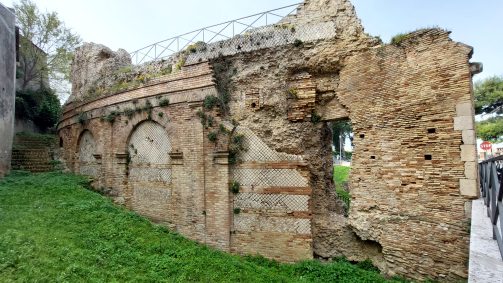The Roman Theater of Chieti was built in the first century AD near one of the entrances to the city, at a time of great building renewal. The cavea, which reached 80 m. in diameter, was set against the hillside, and the scene had the striking landscape of the Gran Sasso as its backdrop. Made of concrete and mixed opus reticulatum and latericium facing, the original design underwent remakes, including raising the bleachers to increase capacity, a symptom of the progressive growth of ancient Teate. Of the ancient structure we can still admire part of the cavea, semicircular in shape where spectators took their seats and were directed into distinct sectors according to social class. Over the centuries, the building has been stripped of its furnishings and part of the structures and incorporated into the modern urban grid so that it was only rediscovered during some construction work in the mid-19th century. Today it is part of the La Civitella archaeological park and, thanks to excavations begun in the 1930s, it is possible to admire its eastern portion and some of the structure’s access archways.









